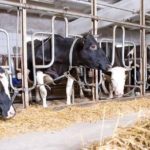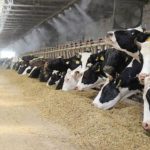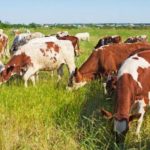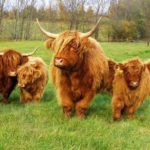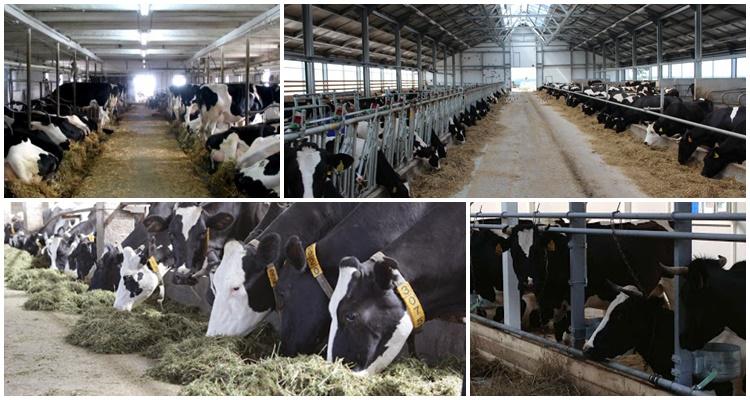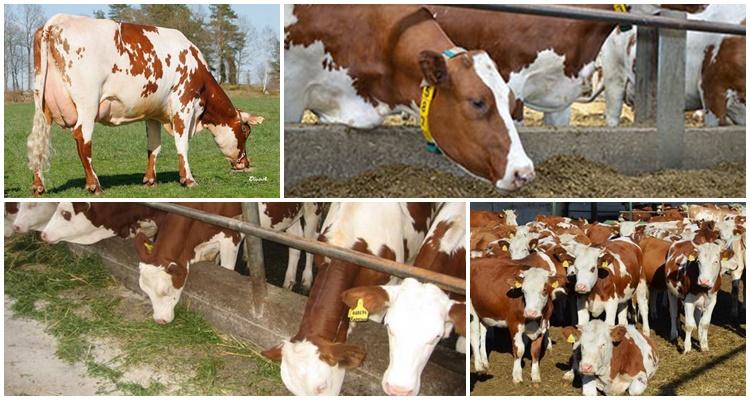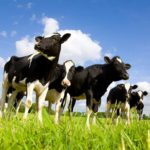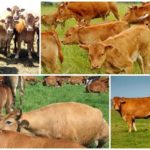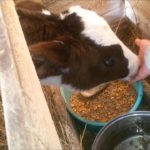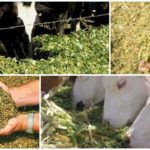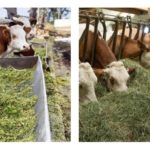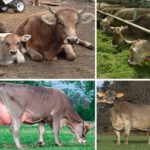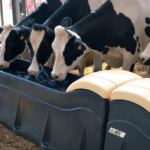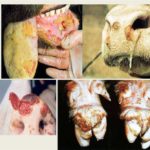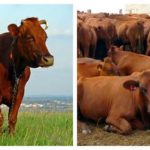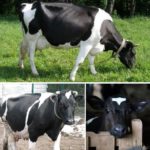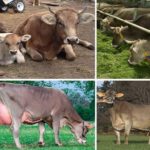Keeping and breeding cattle is a costly and labor-intensive activity, but profitable. Almost all rural residents raise cows on their farms. These animals produce up to 20 liters of milk per day. In winter, cows are kept in stalls; in summer, they try to graze on pastures. The main thing is to provide cattle with high-quality feed. In summer, cows eat grass (up to 55 kg per day), in winter - hay (20 kg per day).
Containment systems
The system of breeding and keeping cattle depends on many factors.Each farm or cow owner independently decides this issue, based on resources, the number of animals, the ability to organize grazing or provide feed.
Stall
There are the following types of cattle housing:
- Year-round stall. This technology is used if nearby lands are plowed and there is no possibility of grazing cattle in the meadow in the summer. A room (cow barn) is built for the animals and a walking area is provided. The cows are fed with imported feed. In summer they provide fresh grass, root crops, in winter - hay, straw, silage, and vegetables.
- Stall-pasture. With this technology, starting in spring, cows are grazed on pasture, and at the end of October they are transferred to winter housing. It is used in farms with at least 0.5 hectares per animal. A cow weighing 505 kg eats up to 55 kg of green grass per day. This amount of feed is enough to produce 15-18 liters of milk per day. The pasture should not be more than 2 km away from the barn.
Pasture
Types of pasture technology for keeping cattle:
- Year-round pasture. In short, with this technology, cows are kept on pasture all year round. To provide shelter from the rain, animals are provided with canopies. The technology is used in regions with warm winters. This method of breeding allows you to obtain cheap products.
- Pasture-stall. With this technology, in the spring, when the grass reaches a height of 10-15 cm, the cows are driven out to the meadow. In the pasture, animals are grazed until frost.This method of cattle breeding requires the construction of a barn for winter stabling and the arrangement of a walking area for exercise of animals during the cold period.
Methods of content
Cattle are kept on farms in different ways: tethered or loose. Each farm chooses its own method of keeping animals, based on capabilities, feasibility and resources.
Tethered
With this method, cows are kept in barns in individual stalls on a leash. Animals are untied (tethered) in two cases: if they need to be taken out to pasture or to a walking area.
Harnesses can be chain, yoke, or fully automatic. The length of the stall is about 2 meters and is designed in such a way that the hind limbs of the animal are on a metal grid. This is done to prevent excrement from falling through the slatted floor. If there are no grates, then the manure is regularly removed by hand.
Animal feed is distributed to individual feeding troughs and nurseries. There are two ways to distribute grass, hay and vegetables: fully mechanized and manual. Cows are milked using milking machines or manually in buckets.
Untied
With this method, cows are kept on the farm without a tether.Animals live in groups, can move freely around the barn and walking area, and eat from a common feeder. During milking, cows are taken to individual milking boxes. In case of group free-stall housing, a maternity ward must be organized where females are transferred before giving birth.
How to breed cattle
Farms and livestock breeding organizations are engaged in breeding cattle on an industrial scale. Any person with a house and land in a rural area can own a cow.
In order to keep cattle, you need to build a barn and provide the animals with feed in summer and winter.
In summer, cows must graze on pasture. For a season, one animal needs an area of 0.5 hectares. A cow eats about 55 kg of grass per day. If there is no such area on private property, then you need to come to an agreement with local authorities and graze cattle on meadows specially designated for grazing. Typically, in every rural area, cows are grazed in a herd, and the livestock owners act as shepherds on a first-come, first-served basis.
Cattle breeding will require significant financial investments. You will have to buy a young cow (price - from 200 dollars) and build a barn (shed, shed). It is important to choose the right breed (dairy, meat-dairy, meat).
The animal must be kept indoors throughout the winter. During the warm period (from May to October), cows are grazed in the meadow.True, animals must spend the night in a barn. In the barn you need to install a nursery, feeders, and drinking bowls. It is recommended to change the bedding daily, remove manure, and lay down new straw. Animals are usually milked three times a day.
The main thing when breeding cattle is to provide food. In summer, animals must graze in the meadow. The desired vegetation is legumes and cereal grasses 15 cm high. For the winter, animals need to prepare hay (about 4 tons), straw, and silage. Vegetables and grain mixtures can be used as top dressing. It is important to provide animals with clean water to drink. A cow drinks about 30-50 liters of liquid per day. Milk yield depends on the supply of water.
Inventory
Cattle breeding begins with the construction of a barn and equipment, equipping the premises with all the necessary items, fixtures and equipment. In the barn you need to install a manger, feeders, and drinking bowls.
First of all, it is recommended to buy milking buckets, pre-milking mugs or a milking machine. To remove manure, scrapers, brushes, and long-handled scoops are used. You need to buy forks for hay, shovels, scoops for feed, graters for root vegetables. When breeding cattle, you need buckets and basins of different capacities, baskets, wheelbarrows or carts for transporting grass, hay, grain, and vegetables.


